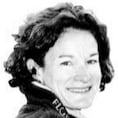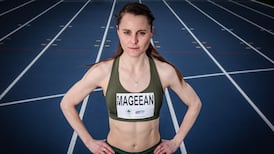Berlin and London just gone, Chicago and New York to come. That’s just four of the big city marathons taking place this autumn, and so far anyway the times just keep getting faster.
Last month in Berlin, running on a standard marathon course, Eliud Kipchoge fell short of getting under the two-hour mark. Even though four years older, at 37, he was able to break his own world record by 30 seconds, last set in Berlin in 2018, crossing the line in 2:01.09.
Kipchoge now holds the two fastest times ever now over the distance, and next best is Kenenisa Bekele, who is a few years older at 40 though still running strong. Last Sunday in London, he managed to eclipse the masters’ world record (over age 40) when stopping the clock at 2:05:53, finishing fifth best overall.
Still it’s not always about times but the competition, even though very few if any will run more than one of the autumn marathons. London will be back to its normal spring date in April next year, and likely try to bring Kipchoge back once more to see how fast he can go next time round.
READ MORE
He is also one of the few marathon personalities to transcend the sport in recent years, the one runner all the big marathons want to see on their start line.
For those watching on TV they may be more familiar with some of the side events that go along with 40,000 people running through the streets of London, past many iconic landmarks; Tower Bridge, The Cutty Sark, The London Eye, Big Ben and then Buckingham Palace in the background as the runners take that final turn and head for the finish line.
It’s clearly not just about the elite: there were 18 different Guinness World Records set on Sunday. Just dream up a fancy costume, run reasonably fast, and anything is possible.
This year we had a witch, a tree, a Minion, a Rhino – there’s always a Rhino – and quite a few bananas. Why stop there? We also saw a box of fruit and vegetables where all six men came together as one costume to claim a Guinness World record for their efforts.
Not everyone can win the race or even be competitive at the front, but as so many big city marathons have shown and returned after recent virtual events, everyone can get out and be active and share a part of the success on the day
Still, it again sees millions of pounds raised for charity, and while many streets are closed off, many more remain open. People can go about their business half not even realising the biggest event in town is just a few streets away.
Some of the fastest runners may not be household names but many of the current stars of British athletics started their careers on the streets of London at the mini marathon, which covers the last 2.6km of the full marathon and in the three championship races; U/13, U/15, and U/17.
Runners in each race get to represent their region and cross the London marathon finish line. Laura Muir, Mo Farah, David Weir, Jake Wightman, Keely Hodgkinson and Eilish McColgan are just some of the names that competed in the mini marathon down through the years.
They didn’t all win, but they all got a taste of what it’s like to take part in a big event and then get to see the best marathoners in the world and thousands more follow in their footsteps at the completion of the London Marathon.
This year in London, the mini-marathon took place on the Saturday, with primary schoolchildren invited to take part. For every child that ran the event £10 was given back to the school to use towards sport and physical activities in their school.

Not everyone can win the race or even be competitive at the front, but as so many big city marathons have shown and returned after recent virtual events, everyone can get out and be active and share a part of the success on the day.
With the Dublin marathon coming up in just under four weeks’ time, the template is there to inspire the next generation and give them a chance to compete on a big stage.
It also allows for even more schoolchildren to sign up with their schools, have a target to aim for, like with The Daily Mile, which promotes 15 minutes of activity each day and already rolled out in over 1,000 primary schools in the country, encouraging even more to join in.
They will not all be future athletics stars, but if we can invite more children across all sports into athletics, well known as the cornerstone in the development skills and fitness, then everyone gets to benefit. No matter what age we all need a goal and target to inspire and motivate to get out and get active every day.
The Dublin Marathon does support The Marathon Kids Ireland, an eight-week programme targeting Fifth and Sixth class students in schools in South Dublin County Council, Fingal and Dublin City.
Students perform four running sessions each week, inching them closer to completing their first marathon, as well as learning about the benefits of physical activity.
The finale will see the students running their last mile and completing the marathon at the National cross-country course located at the National Sports Campus at Abbottstown.
Maybe something similar for Cork, Limerick, Galway and Belfast marathons to incorporate also and encourage the next generation of athletes across the country.
So often adults realise late in life the importance of a fit and healthy lifestyle. It’s a lot easier to start young and maintain healthy habits throughout life. Now that we know this, it’s more important than ever to educate and encourage an active lifestyle for everyone, not just those already involved in competitive sports.
The big city marathons around the world continue to grow, and we need to consider at all areas of growth: some look to be bigger and better and find more ways to showcase the event, others to attract more viewers and sponsorship.
In London last Sunday, for the first time they built a bridge across the finish line with a glass floor, where you could look down and see people cross the line beneath your feet.
The joyous scenes and relief for so many to make it to the finish line was clear to see. Also, to see so many more on the side lines wish they were out there enjoying that exhilaration and endorphin rush that comes with achieving the rewards of accomplishment after weeks and months of preparation.
Kipchoge was also there at the finish line to help present medals to many of the finishers. It doesn’t matter how fast or slow the marathon is run, the same medal is received by all, and the same with the mini version to the mini marathoners, all across the same finish line, all looking ahead to the next challenge.















